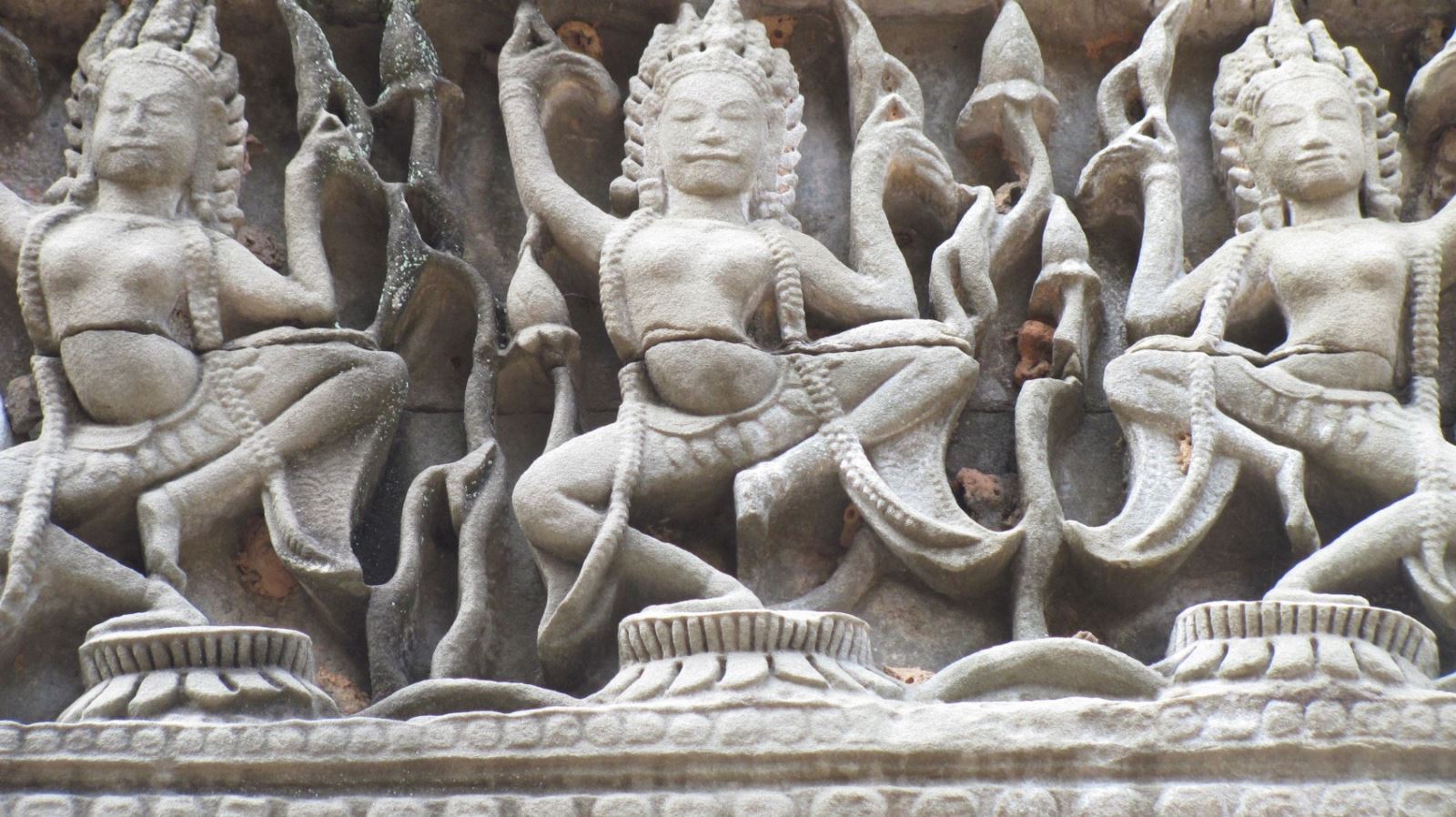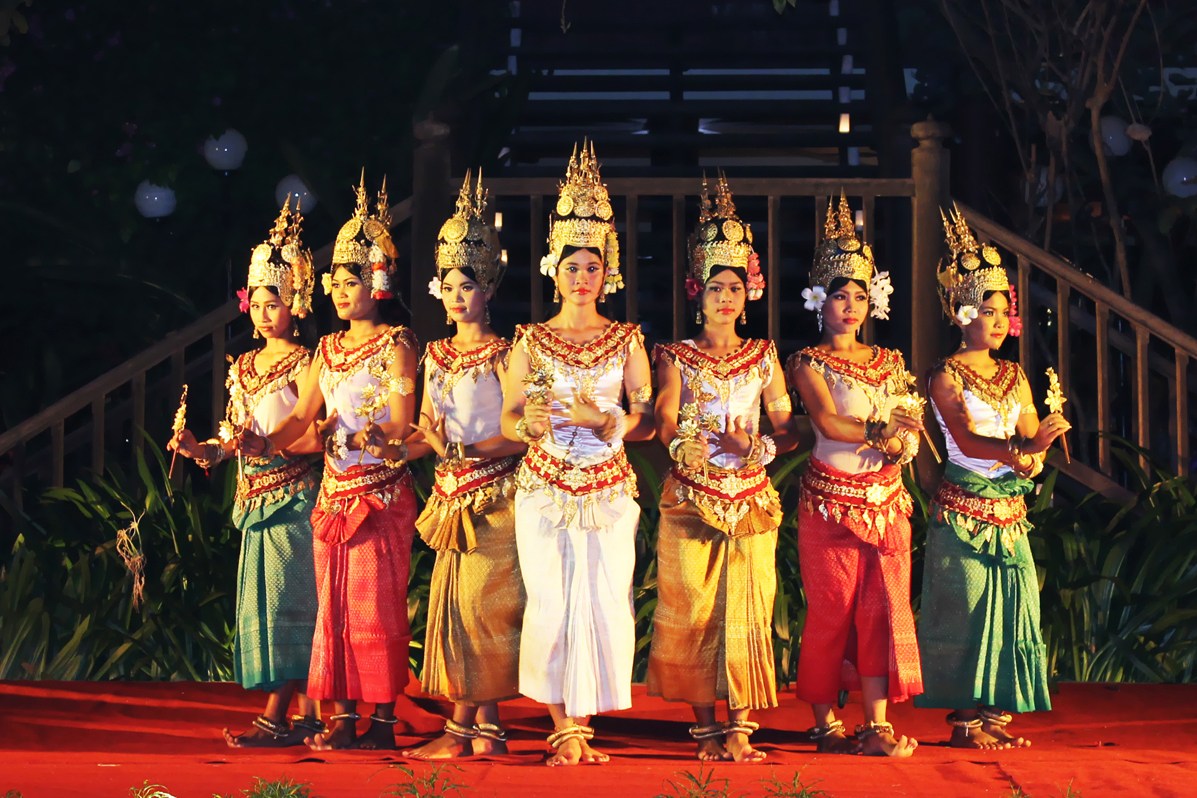The Apsara dance is a traditional dance of the Kingdom of Cambodia that dates back to the 7th century according to some of the carvings found at the Sambor Prei Kuk temples (Cambodia’s Kompong Thom province) which immortalised Apsaras dancing on the stone. Apsaras’ dance is an essential part of the Khmer culture which finds its roots in both Hindu and Buddhist mythologies.

According to the Hindu mythology, Apsaras were beautiful female creatures that descended from heaven to entertain Gods and Kings with their dance. Legend has it that they were born from the Churning of the Ocean of Milk and thus, are messengers of peace between Kings on earth and Gods in heaven. It is also said that Apsaras were the wives of Gandharvas who were servants at the palace of Indra, the King of Gods. As willing servants of Indra, the ethereal nymphs seduced mortals with their beauty if those threatened the power of the King of Gods. The power of Apsaras over men was beyond comparison as both mortals and divinities could not resist the charms of the “celestial dancers” – which is the meaning of “Apsaras” in ancient Sanskrit.

The Apsara dance had almost disappeared during the Khmer Rouge period (1975-1979) but the tradition remained thanks to a few surviving dancers who passed on their knowledge to young generations. One of the most popular figures of the Apsara revival was late Father King Norodom Sihanouk’s daughter, Princess Bopha Devi, who went on to become the face of Khmer traditional dance in the 1950’s and 1960’s both in Cambodia and around the world.

Apsara dance used to be performed for royal family and imperial people to entertain. Not until 2000, when the massive Cambodian tourism started to open, has Apsara been popularized in travel destinations for visitors to enjoy The Traditional Khmer Art & Culture. This attractive dance was soon to be realized as a hidden treasure of Cambodia when it was recognized as World’s Intangible culture heritage in 2003 by UNESCO.

This traditional dance is meaningful in many ways as it constitutes a link between the different religions on which Cambodia had been built upon (Animism, Hinduism, and Buddhism). Indeed, every single movement of the fingers has a particular meaning. It can worship the spirits of nature by depicting a blossoming flower or refer to one of the hundreds legends of Buddhism or Hinduism.

As the Apsara dance is extremely complex, Cambodian children (particularly girls) are trained from a very young age to be able to get enough flexibility to execute intricate movements and to bend their fingers almost till their wrists. Apsara dancers are always well-dressed with traditional costumes that can also be seen on the Angkor temples’ walls. They wear elegant silk clothing with floral motifs, magnificent headdresses and jewelries.











